White or fragrant thunbergia
Thunbergia fragrans, Fam. Acanthaceae
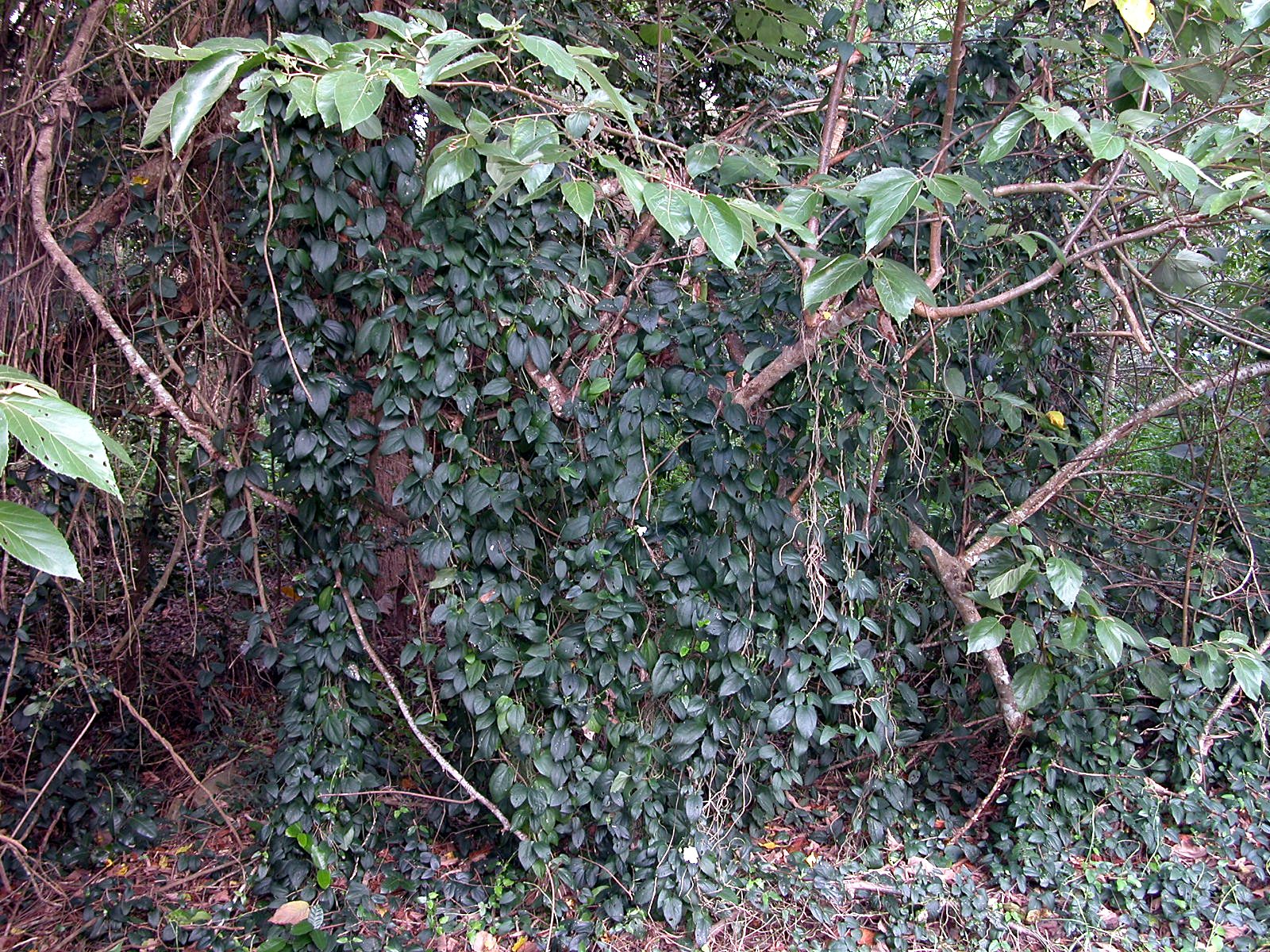
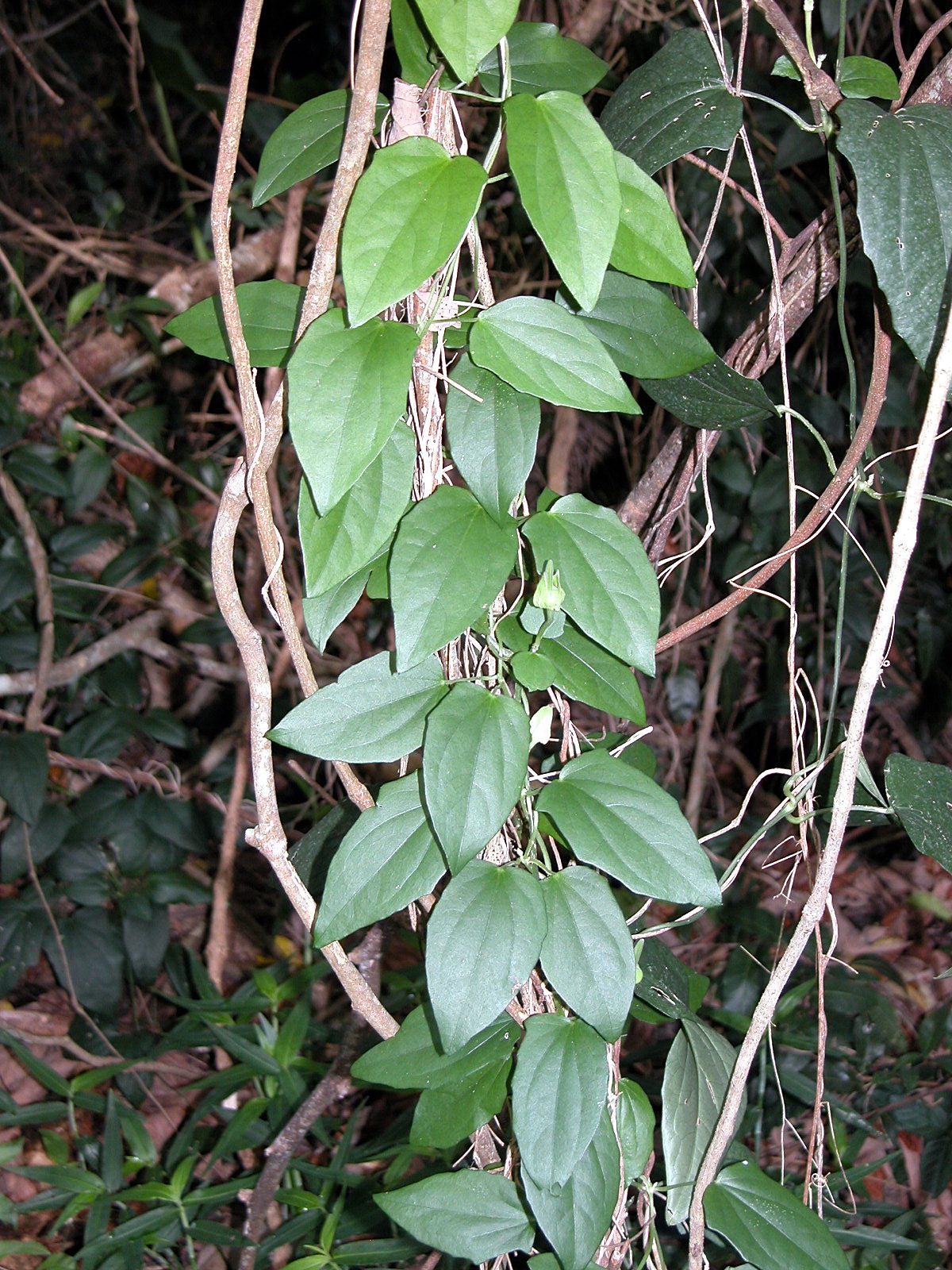
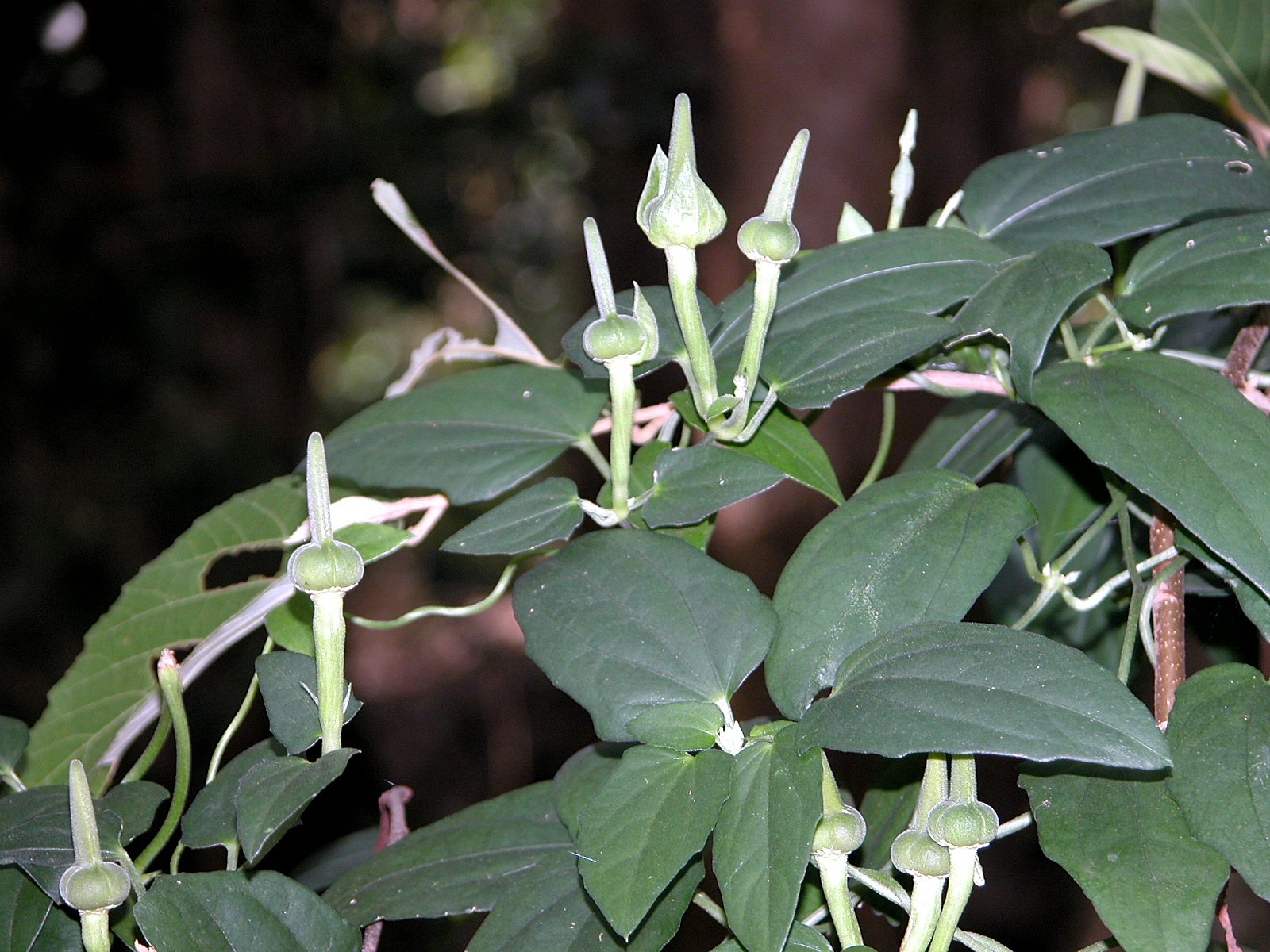
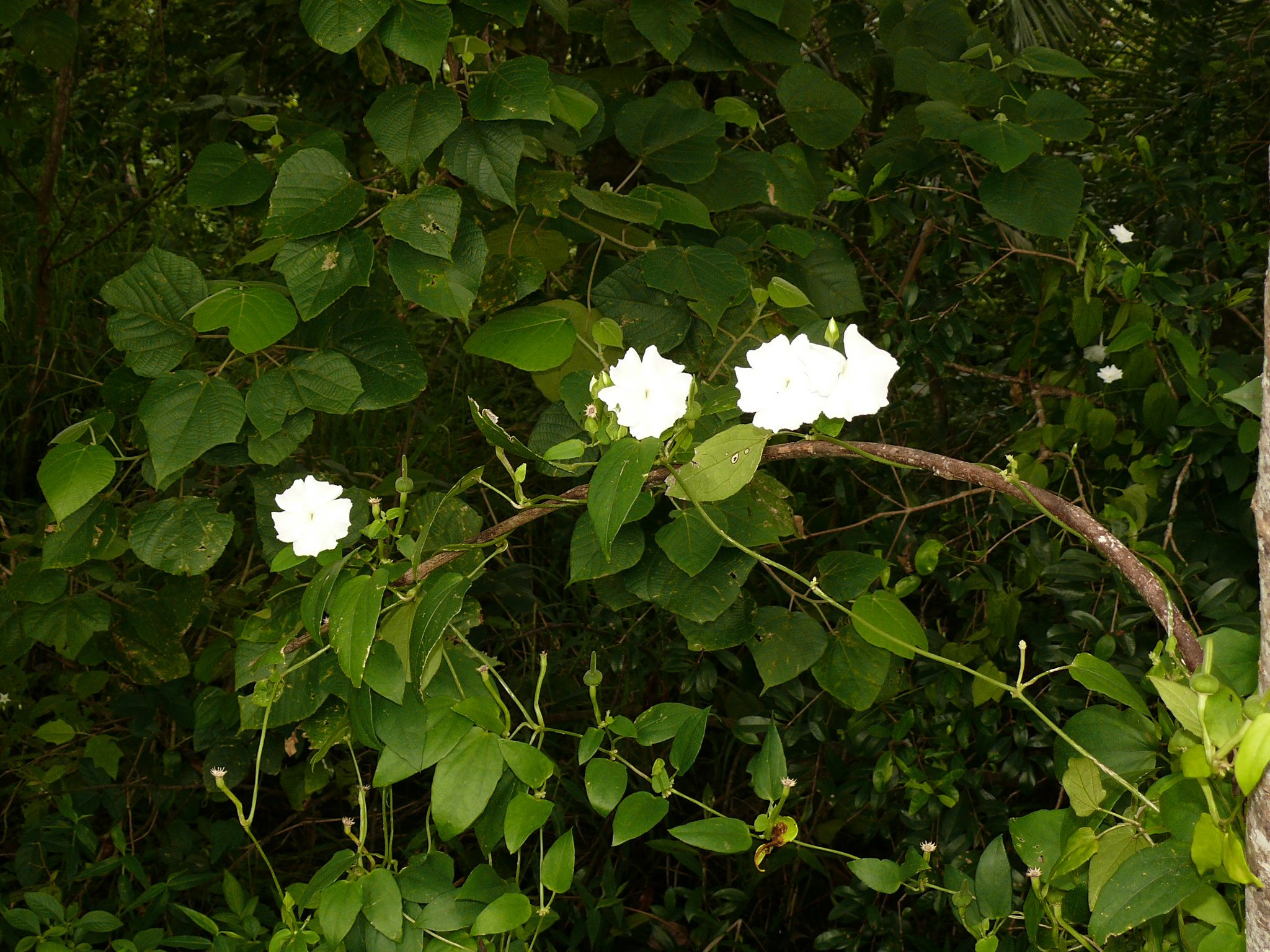
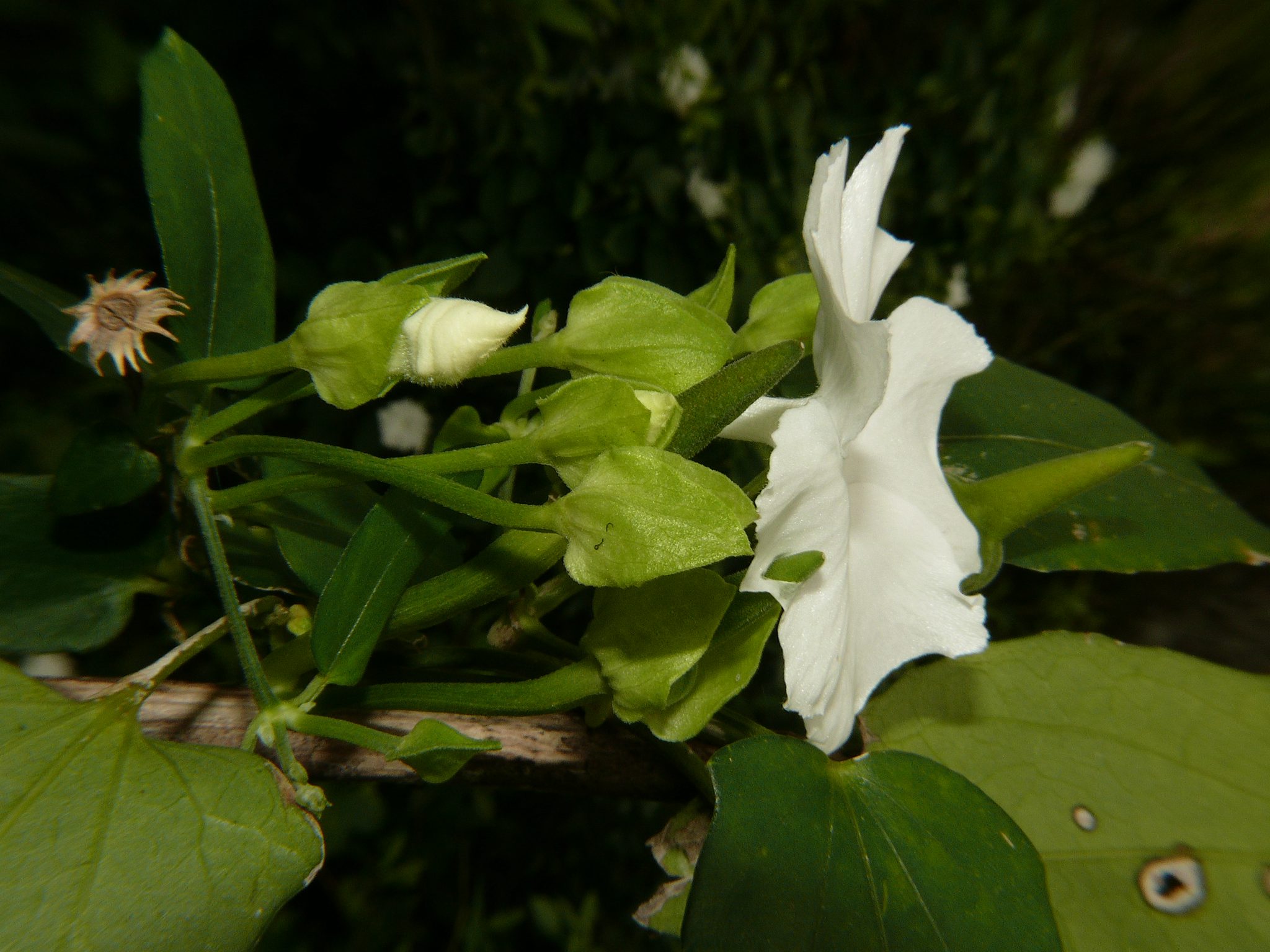
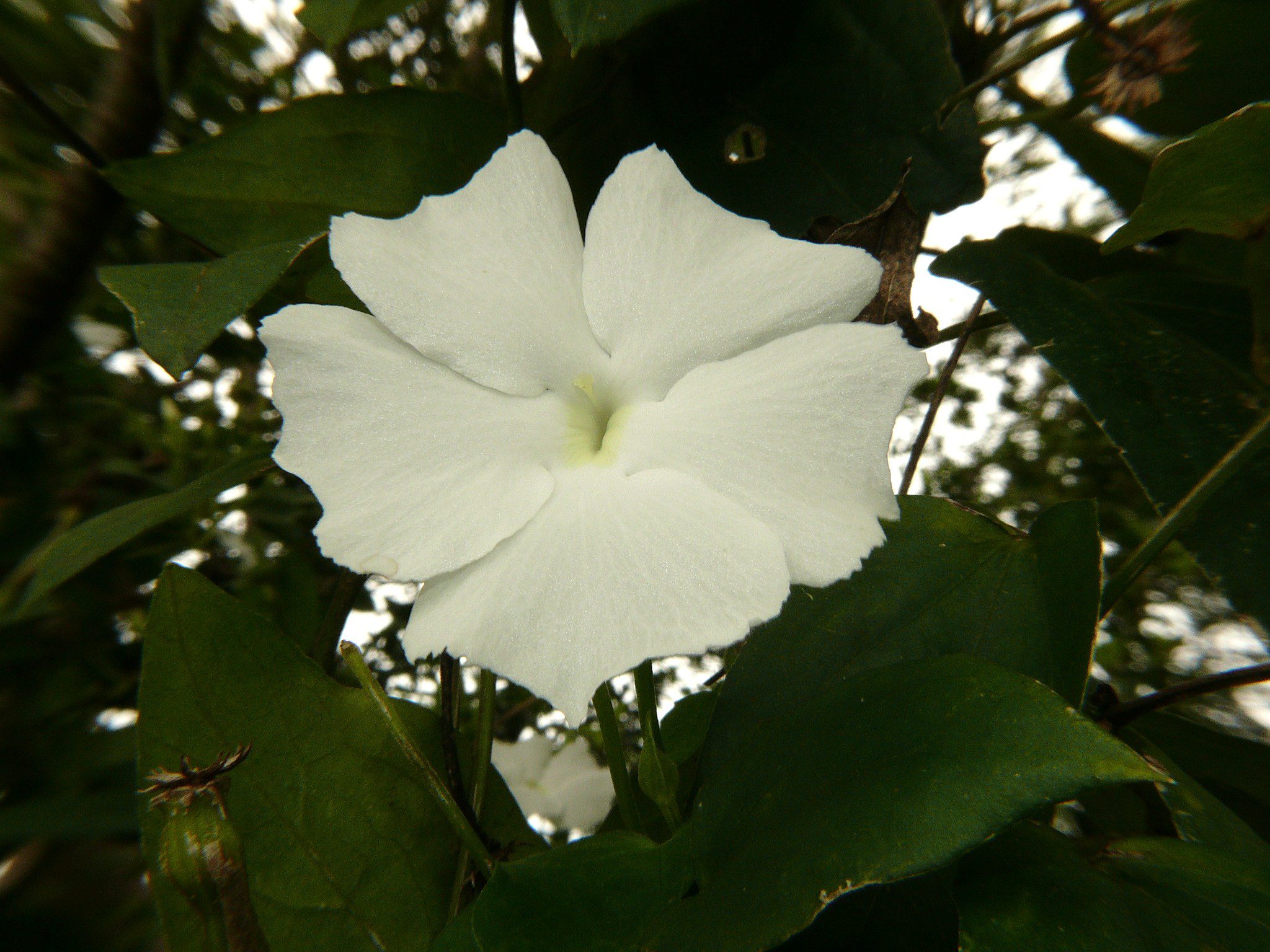






Vigorous, twining perennial vines with long slender climbing stems and large tuberous root systems. Tubers as large as 70 kg have been recorded.
| Weed Category: |
Other invasive plants Invasive plants that are not prohibited or restricted invasive plants, but are known to spread readily and cause negative impacts, within the region.
|
| Weed: | Yes |
| Form or habit: | Vine (Climbing, Twining or groundcover) |
| Family: | Acanthaceae |
| Leaf: | Simple Opposite Simple, opposite, triangular-ovate, 100 x 50mm, pointed tip, smooth or toothed margins. |
| Flower conspicuous: | Conspicuous |
| Flower colour: |
White |
| Flower description: | Trumpet-shaped with short tube and five spreading petals, white, 30 x 50mm, in axillary pairs or solitary. |
| Fruit conspicuous: | Conspicuous |
| Fruit colour: |
Brown |
| Fruit: | Dry |
| Fruit description: | Brown, cone-shaped capsules with rounded base and end in a beak, contain four flat seeds that are explosively expelled at maturity. Viable seeds are produced, contrary to earlier beliefs. |
| Habitat: | |
| Distribution | |
| Food source for: | |
| Toxicity: | No toxicity known |
| Origin: | Northern India and tropical Africa |
| Notes: | Spread by: garden waste, water, contaminated soil containing vegetative material. Propagation is mostly from stem cuttings or shoots from the tuberous roots, particularly if damaged. Invades/threats: creek banks, native remnant vegetation; smothers vegetation pulling down mature trees. Notes: introduced as garden ornamentals, now serious environmental weeds. They are difficult to control due to their extensive tuberous root systems. If detected, early control is essential and existing garden plants should be destroyed. Four species are declared in Queensland and another species, though not declared, is already in environmental areas within this district. Annual thunbergia (T. annua), Class 1, not known to occur in Queensland. Environmental weed. |
| Information sources: | Mackay Regional Pest Management Group (2018) Weeds of the Mackay Whitsunday Region Second Edition. |